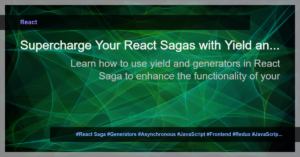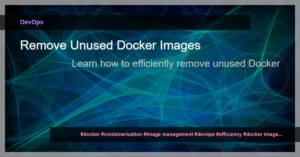Dockerfile Cheatsheet: Building images with ease
Have you ever found yourself spending a significant amount of time building Docker images and trying to figure out the right commands and best practices? Look no further! This Dockerfile cheatsheet will guide you through the process, helping you build images with ease.
What is a Dockerfile?
Before diving into the cheatsheet, let’s quickly recap what a Dockerfile is. A Dockerfile is a text file that contains a set of instructions used to build a Docker image. It defines everything needed to run a container based on the image.
Filename and location
A Dockerfile should always be named Dockerfile without any file extension. It is typically placed in the root directory of your project.
Structure of a Dockerfile
A Dockerfile consists of a series of instructions, each on a separate line. Below are some of the most commonly used instructions:
- FROM: Specifies the base image for your Docker image
- RUN: Executes a command within the container
- COPY: Copies files and directories from the build context to the image
- WORKDIR: Sets the working directory for any RUN, CMD, ENTRYPOINT, COPY, and ADD commands
- CMD: Specifies the default command to run when the container starts
- EXPOSE: Exposes a port at runtime
- ENV: Sets environment variables
Example Dockerfile
Let’s take a look at an example Dockerfile:
FROM node:12
WORKDIR /app
COPY package.json package-lock.json /app/
RUN npm install
COPY . /app/
CMD ["npm", "start"]
In this example, we start with the node:12 base image, set the working directory to /app, copy the package.json and package-lock.json files, install dependencies, copy the remaining files, and finally specify the command to run when the container starts.
Best practices
To ensure your Dockerfile is well-optimized and follows best practices, consider the following tips:
- Use a minimal base image to reduce the size of your final image
- Combine commands whenever possible to reduce the number of layers
- Specify the full path for the
COPYcommand to avoid unexpected behavior - Use
.dockerignoreto exclude unnecessary files and directories - Clear the package manager cache after installing dependencies
- Use explicit version tags for base images and dependencies
Conclusion
With this Dockerfile cheatsheet, you now have a handy reference guide to help you build Docker images with ease. Remember to follow best practices and optimize your Dockerfile for efficient image creation. Happy Dockerizing!








